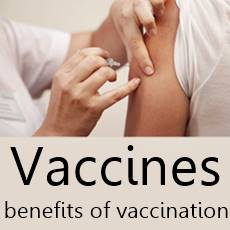Science-based Tips for Achieving Your Goals
A study conducted in 2020, (3) involving 1,066 participants investigated the New Year's resolutions and strategies to achieve success in following through with them.
High Dropout Rates
At the end of the year, those using approach-oriented goals were most successful, with a 58.9% achievement rate compared to a 47.1% success rate for those who had set avoidance-oriented goals.
After one week, 23% of the participants had dropped out, the number grew to 45% by the end of January, 57% after three months, 60% halfway through the year and only 19% had stuck to their resolution in a two-year follow-up. (3)
These results are similar to those of a 2007 study that showed that only 12% of those who had made New Year's resolutions were successful, (5)
10 Strategies to improve adherence to your goals
New Year's resolutions should be part of your life vision, of your values, of the better you.
With this in mind, you can stick to your resolutions and succeed.
1. Few goals are better than many
The University of California, Davis (7) suggests that focusing on a few relevant goals is better than coping with too many. Select one or two critical goals and dedicate all your efforts to achieving them. With too many goals you risk failure and demotivation if you don't attain some of them.
A 2014 study showed that 10% of those who failed said they made too many resolutions. (5)
2. Do your Homework
When defining your resolutions, learn what you need to do to reach your goal. Plan, read, and investigate, it will help you know how much time it may take (losing 20 lb of body weight can take the whole year), what resources you will need, and what setbacks to expect (a plateau in weight loss progress).
Adequate planning will help you succeed. (7)
3. Set SMART Goals aligned with your values
Your goals should be aligned with what is really important for you, your values. It can be free time, family, your health, relationships, whatever. The real objective is taking proactive steps towards better life quality so that you are living in harmony with your values. Doing this will make it easier to stick to your New Year's resolutions. (4)
Use SMART criteria to define your goals.
SMART is an acronym for goal setting guidelines: Specific: set a well-defined area for improvement., Measurable: so that you can track your progress, Achievable: realistic, Relevant: aligned with your other life goals, and Time-bound: set a timeline for the expected results.
Setting specific goals is far better than vague ones, and it will help you feel more accomplished when you attain your goals.
"Exercise more" is far too vague, instead "Exercise 30 minutes every day" is SMART. (3)
A 2014 study reported that 35% of participants who failed their New Year's Resolutions said they had set unrealistic goals, and 33% of those who failed said they didn't keep track of their progress. (5)
Write down your goals, use a notebook to track your progress. Enjoy your success, learn from your setbacks.
4. Social Support and Accountability
Involve friends or family in your goals. Social or community support has been proven to help achieve goals.
This will also make you feel accountable. Spouse or friends will help you stay on track, motivating you, reminding you and celebrating your success.
You can also join a group, use an App to track your progress or hire a coach. (3),(7)
Research has shown that setting up a way to be accountable for your goals makes it twice as likely to achieve them. (9)
5. One Step at a Time
Set interim goals as stepping stones towards your ultimate objective. Distant goals may not seem relevant, or may be daunting, this will lead to procastination. But closer interim goals motivate and prompt you to reach them. On the other hand, there is also the risk that you may fail to attain your interim goals and lose motivation.
The key is to start small. Setting a smaller attainable goal can help you advance to reach the big outcomes. If it is weight loss, try a 5 lb loss in 2 months, and once you have reached that goal, celebrate your small win, and then define a new goal of another 5 lb for the next three months, and so on. (3),(9)
6. Give it a try before quitting
Some resolutions can feel tedious, changing habits takes time. It won't happen overnight. Accept the setbacks, and keep on working towards your goal. New routines will become habits after a couple of months. (7)
7. Expect Obstacles
Try to identify potential barriers to your progress and plan how to overcome them. It will keep you motivated and help you to succeed. (9)
8. Remember the Discontinuity Effect
A study by Bas Verplanken and Deborah Roy (2016) (6) showed that a behavior can be changed effectively when external events disrupt old habits. This creates the mood for even more change. External factors called "life course changes," like moving to a new home, or a new context can create a positive environment to embrace change. This is known as the "discontinuity effect."
The study also showed that there was a 3-month "window of opportunity" to start changing. The logic of disruption is that life course changes disturb the old habits and people become open to new information that lead to behavior changes.
New Year's resolutions aren't usually based on a "life course change," the change from one year to the next is merely symbolic. However, if your physician tells you that you should quit smoking immediately due to some life-threatening illness, the information is disruptive and can change your mindset.
Set your goals to improve your life and change it, not just because it is New Year. (9)
9. Set Approach-oriented goals
We have seen further up, (3) that avoidance-oriented goals where you seek to drive your behavior away from an undesired stimulus ("don't eat fast food") are less successful than approach-oriented ones where you want to guide your behavior towards a desired target ("eat my 5 portions of fruit and vegetables every day").
Replace a bad habit with one that is healthier and gives you more pleasure.
10. Avoid Repeating Past Failures
Trying to succeed where you failed before requires resolution and new strategies. Trying a new goal and building confidence can help you tackle a previous failure with success in the future. However, if you plan on giving the old goal another try, first analyze what went wrong, redefine your strategies, research a bit more, and then give it your all.



